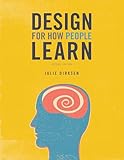Instructional Design
Learner Analysis
Learner analysis is an essential process of developing an effective instructional design. The design of an instruction is to target an audience or a learner in an attempt fill a performance gap. Therefore, it is imperative to identifying learner characteristics to establish design content concentrated on the learner’s needs. There are various learner characteristics, but some include intelligence, culture, disabilities, age, gender, ethnicity, and so forth (Katherine Cennamo, 2005).
Further Analysis
It is difficult to determine what instructional design guidelines to prefer, but after viewing the internet videos Instructional Design Rules of Thumb – Learning from the Pros – Part 1 and Instructional Design Rules of Thumb – Learning from the Pros – Part 2 from YouTube, I discovered a few interesting and ideal concepts. One that protrudes from my memory most is analysis. Associate Professor Nada Dabbagh claims analysis is important because learning principles, strategies, environment, and situations are constantly changing, so it is imperative to analyze modern learning innovations to develop effective instructional designs (cyn2bnvd, 2009). Another concept that appears to be a great guideline for instructional design is identifying the problem or the need for change. Associate Professor Monica Tracey claims the ability to identify the problem is the most important concept because it generates the intended instructional goal and objectives.
Know Design Limits
Technology integration is an essential concept with developing instructions because it is highly useful for many educational reasons. However, although interviewees from the second YouTube video, Instructional Design Rules of Thumb – Learning from the Pros – Part 2 agree that technology integration is important, they also agree that the effectiveness of technology is unknown (cyn2bnvd, 2009). This section of the video is confusing because the interviewees are inconsistent with their expressions about the use of modern innovations with instructional design projects. However, it generated a critical reflection with Associate Professor Nada Dabbagh’s interview from the first video, which is to analyze modern learning situations. From the second video, I also agree with Associate Professor Monica Tracey when she claims the instructional designer should know and be honest with their limitations (2009). I feel this is an important concept to foster because it takes a team effort to develop a design that facilitates learning and as the famous expression goes, “there is no I in team”.
Considering Cognitive Concepts
In chapter six, seven, eight, and nine of E-Learning and the Science of Instruction, Authors Clark and Mayer emphasize the basis of instructional design should align with the cognitive theory of multimedia learning. The cognitive theory explains that all people have a visual processing channel and a verbal processing channel, each channel capacity is limited to the amount of processing that takes place at once, and learners actively attempt to make connections between the two channels to understand the information presented to them (Clark & Mayer, 2011, p. 138). With this in consideration, instructional design need to be mindful of design principles, such as the modality, redundancy, coherence, and personalization principles.
References
Clark, R. C., & Mayer, R. E. (2011). E-Learning and the Science of Instruction (Third ed.). San
Francisco, CA: John Wiley & Sons, Inc.
cyn2bnvd. (2009, May 12). Instructional Design Rules of Thumb - Learning from the Pros - Part
1. Retrieved from YouTUbe: http://www.youtube.com/watch?v=fdpHO1xycgo&feature=related.
cyn2bnvd. (2009, May 12). Instructional Design Rules of Thumb - Learning from the Pros - Part
2. Retrieved from YouTube: http://www.youtube.com/watch?v=aZODZkTb2NA&NR=1.
Katherine Cennamo, D. K. (2005). Real World Instructional Design. Belmont: Wadesworth
Cengage Learning.
Robert M. Gagne, K. C. (2005). Principles of Instructional Design (Fifth ed.). Belmont: Cengage
Learning.









